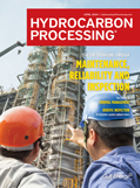SAF reduces carbon footprint for MRI scanner delivery
In another first for Green Radiology, the UCSF Department of Radiology & Biomedical Imaging and Siemens Healthineers have shown how using sustainable strategies for device delivery can substantially reduce greenhouse gas production in the medical imaging community. Supply chain carbon emissions, together with device manufacturing and operation, represent the largest contributors to carbon emissions in medical imaging.
In mid-July, the department received a Siemens MAGNETOM Sola 1.5T MRI system, delivered from Germany to our China Basin Landing site in San Francisco using a combination of sustainable aviation fuels (SAF) and short road transportation for an optimal mix of speed and sustainability. The scanner has been in use for clinical patients since early September.
Alastair Martin, PhD, who leads Capital Projects for UCSF Radiology & Biomedical Imaging, partnered with Vibhas Despande, PhD, from Siemens on using SAF for this scanner delivery. “As part of our commitment to Green Radiology we are focused on understanding and mitigating imaging’s energy demands,” Martin said. “At the same time, we are making strides to meet our goal of becoming the world’s first carbon neutral imaging fleet by choosing the most energy efficient modes of transport when we invest in new scanners.”
Bio SAF are typically derived from corn, plant waste, or other agricultural byproducts, while synthetic SAF may be produced using renewable energy, water and carbon dioxide (CO2). Because various greenhouse gases have different warming potentials, CO₂ equivalent (CO₂e) standardizes the climate effects of a mixture of greenhouse gases. Siemens uses the industry-standard Global Logistics Emissions Council (GLEC) framework to calculate the average CO2e emissions for both aviation and road transport. The GLEC framework estimated 52,500 kg CO2e (well-to-wheel) for transportation in this specific case. This is compensated by approximately 22,000 liters of SAF.
Using SAF enables a 75-90% reduction in CO2e emissions compared to conventional jet fuel kerosene. To bring delivery emissions for this particular scanner to almost zero, UCSF and Siemens Healthineers co-funded the cost of offsetting road transport emissions by procuring 110% to 125% of the SAF needed. Logistics consultants Kuehne+Nagel issued the third-party certificates for this low-carbon delivery using the “book and claim” accounting and reporting method. Book and claim is a versatile chain-of-custody model that tracks, documents, and verifies the attributes – including sustainability benefits – of products as they move through the supply chain.
Department chair, Christopher Hess, MD, PhD, noted that “As climate change continues along an increasingly precipitous course and to achieve the Paris Agreement’s goal of limiting global temperatures to 1.5°C above pre-industrial levels, it is vital for the medical-industrial complex to develop strategies to reduce its carbon footprint. To reduce CO2e emissions for future Siemens scanner deliveries, we will strive to use sea freight rather than air freight for the longest portion of transport from Germany to California. We are committed to reducing our carbon footprint through efficiency and innovation and will continue to adapt our emissions-reduction efforts as market-based mechanisms evolve.”






Comments